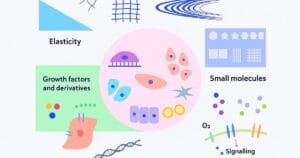
COMPETITIVE EXAM MCQs SERIES of ENVIRONMENTAL SCIENCE for UGC-NET/JRF, SLET, ARS, GATE, and other entrance tests – Contemporary Environmental Issues: Global Environmental Issues.
Syllabus Outline
- Climate change and global warming (extreme weather events, climate justice, net-zero commitments, Paris Agreement implementation).
- Biodiversity crisis and sixth mass extinction (accelerated extinction rates, habitat loss, invasive species, ecosystem collapse).
- Transboundary pollution (plastic pollution crisis, microplastics, POPs under Stockholm Convention, e-waste, mercury under Minamata Convention, atmospheric pollution).
- Resource depletion and scarcity (global water stress, soil degradation, critical mineral scarcity, food security challenges).
- Emerging challenges (space debris, geoengineering debates, pandemic-environment nexus, digital pollution).
- Global environmental governance (multilateral environmental agreements, UNEP, GEF, Green Climate Fund, corporate ESG responsibilities, environmental movements).
- Sustainable development integration (environmental SDGs, planetary boundaries, green economy transitions, environmental justice).
This quiz contains concept-based, most frequently asked 25 MCQs of “Contemporary Environmental Issues: Global Environmental Issues”. Each question has a single correct/most appropriate answer.
*****
1. Acid rain is primarily caused by the atmospheric reactions of which pollutants?
A) Carbon dioxide and methane
B) Sulfur dioxide and nitrogen oxides
C) Chlorofluorocarbons (CFCs) and hydrochlorofluorocarbons (HCFCs)
D) Particulate matter and ozone
2. The Montreal Protocol (1987) is a global treaty aimed at phasing out substances responsible for which environmental problem?
A) Global warming
B) Ozone layer depletion
C) Biodiversity loss
D) Ocean acidification
3. According to IPCC AR6 (2023), human activities have caused global surface temperature to reach approximately how much above pre-industrial (1850–1900) levels by 2011–2020?
(A) 0.9 °C
(B) 1.1 °C
(C) 1.5 °C
(D) 2.0 °C
4. Which of the following international environmental statements is correct?
I – The Montreal Protocol addresses ozone depletion.
II – The Paris Agreement aims to limit global warming to well below 2 °C, pursuing 1.5 °C.
III – The Kyoto Protocol (1997) committed developed nations to an average of 5% GHG reduction over 2008–2012.
A) I, II and III are correct
B) Only I and II are correct
C) Only II and III are correct
D) Only I and III are correct
5. In the context of the Paris Agreement, “NDC” stands for:
A) Nationally Determined Contribution.
B) Non-Differentiated Commitment.
C) National Data Classification.
D) New Development Charter.
6. Which of the following is NOT a greenhouse gas contributing significantly to global warming?
A) Carbon dioxide (CO₂)
B) Methane (CH₄)
C) Nitrous oxide (N₂O)
D) Nitrogen (N₂)
7. Which extreme weather event has become more frequent or intense as a result of global warming?
A) Heat waves
B) Tsunamis
C) Decreases in sea level
D) Weaker hurricanes
8. According to the Paris Agreement’s design, countries are expected to update their climate action plans every:
A) Year
B) 5 years
C) 10 years
D) 20 years
9. The IPCC reports that to limit warming to 1.5°C, global greenhouse gas emissions must fall by approximately ___% by 2030 (relative to 2010 levels).
A) 10%
B) 25%
C) 45%
D) 65%
10. Which of these is an example of an invasive species that has caused major damage to native fauna?
A) Nile perch introduced into Lake Victoria
B) Kangaroo in Australia
C) Bald eagle in North America
D) Giant tortoise in the Galápagos Islands
11. According to WWF, the current species extinction rate is roughly ___ times higher than the natural background rate.
A) 10–100 times
B) 100–1,000 times
C) 1,000–10,000 times
D) About the same as the natural rate
12. The Kunming-Montreal Global Biodiversity Framework (CBD COP15) includes a goal to conserve at least ___% of Earth’s terrestrial and marine habitats by 2030.
A) 10%
B) 30%
C) 50%
D) 100%
13. What is unique about the current (sixth) mass extinction compared to previous mass extinctions in Earth’s history?
A) It is driven primarily by human activities.
B) It is caused by natural asteroid impacts.
C) It only affects marine life.
D) It has a precise 65-million-year periodicity.
14. The Stockholm Convention primarily aims to eliminate or restrict:
A) Persistent organic pollutants.
B) Carbon dioxide emissions.
C) Nuclear wastes.
D) Ozone-depleting substances.
15. What is the primary concern associated with electronic waste (e-waste)?
A) Release of heavy metals and toxic chemicals.
B) Increasing levels of stratospheric ozone.
C) Overloading of fibre-optic internet cables.
D) Spread of electromagnetic radioactivity.
16. Plastic microfibers often enter freshwater and soil environments primarily through:
A) Washing of synthetic textiles in washing machines.
B) Volcanic eruptions near a plastic waste disposal site.
C) Burning plastic waste.
D) Leakage from a solid waste dumping site.
17. Why are microplastics considered a significant environmental hazard?
A) They cannot decompose into the environment.
B) They can absorb and release toxins and be ingested by organisms up the food chain.
C) They quickly decompose into harmful substances.
D) They prevent photosynthesis in forests.
18. The Basel Convention is most directly related to which issue?
A) Control of transboundary movements of hazardous wastes.
B) Regulation of greenhouse gas emissions.
C) Control of ozone-depleting substances.
D) Protection of migratory wildlife.
19. Which of these is considered a critical mineral for renewable energy technologies and electric vehicles?
A) Lithium
B) Calcium
C) Silicon
D) Oxygen
20. Which of the following global resources is generally NOT considered to be in short supply in the near future?
A) Freshwater in many regions
B) Phosphorus for fertilisers
C) Timber
D) Iron ore
21. Which of the following is an example of solar geoengineering aimed at climate change mitigation?
A) Reflecting sunlight by injecting sulfate aerosols into the stratosphere.
B) Regulation and the use of solar power in commercial aviation.
C) Integration of nuclear energy with solar energy and capturing Carbon Dioxide from the atmosphere.
D) Using geo-satellites to enhance solar energy generation.
22. A major concern about stratospheric aerosol injection is that it could:
A) Reduce solar panel efficiency.
B) Alter precipitation patterns.
C) Cause the ozone hole to expand.
D) Increase heat waves.
23. What is the recent trend as of the year 2025 observed regarding Amazon deforestation rates in Brazil?
A) Deforestation rates increased due to agricultural expansion
B) Deforestation rates dropped, reaching the lowest level since 2015
C) Deforestation rates remained stable with no significant change
D) Deforestation rates fluctuated wildly with no clear pattern
24. What percentage reduction in global greenhouse gas emissions is required by 2030 to limit warming to 1.5°C?
A) 25% reduction from 2019 levels
B) 35% reduction from 2019 levels
C) 43% reduction from 2019 levels
D) 55% reduction from 2019 levels
25. What is the primary mechanism of accelerating environmental issues related to methane in Arctic Regions?
A) Permafrost thaw releases stored methane directly into the atmosphere
B) Arctic warming is causing increased precipitation, creating more wetlands that produce methane.
C) Ocean warming releases methane hydrates from the seafloor
D) Reduced Arctic Sea ice increases solar absorption and methane oxidation rates
*****
Previous: Models of Population Growth and Interactions
Next: India’s National Action Plan on Climate Change
References
- R. Rajagopalan (2015) ENVIRONMENTAL STUDIES: FROM CRISIS TO CURE, Oxford University Press, Third edition
- Bharucha, E. (2013). Textbook of Environmental Studies. Universities Press, 3rd edition
- Abha Vashistha and Surabhi Johari (2020). Contemporary Environmental Issues and Challenges, Bloomsbury Prime
- William Cunningham and Mary Cunningham (2009) Environmental Science: A Global Concern, McGraw-Hill Education, 11th edition

